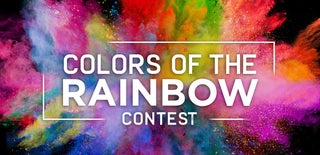Introduction: Colors With Chemistry: Make Your Own PH Tester
This project fits squarely into the "just because it's fun" category. Yes, you can buy commercial pH testers which probably are more accurate than this DIY home technique -- but this is so pretty and so much fun to play with that buying boring paper strips just seems sacrilegious. By following these instructions you can make those same paper strips to use for testing the pH of various liquids at some later date, or just fool around with your brew by combining it with drops of household chemicals to see their relative acidity and the gorgeous colors of the rainbow you can create. This is a good summer project for kids, and as an added benefit, you can eat the left-overs!
Step 1: Recipe
Ingredients
- 2 cups chopped red cabbage
- 1 1/2 cup distilled water
- white blotter paper (thick, absorbent, white, acid free paper)
Instructions
Chop up red cabbage and place in glass pyrex container. Cover with boiling water and let it cool to room temperature.
Strain the beautiful purple liquid into a non-reactive pot (such as enamel covered cast iron). Bring to a simmer and let it evaporate for about ten minutes till approximately 3/4 cups of liquid remains. Pour into flat container, such as a glass lasagna pan.
Saturate paper with the liquid. Let dry, then cut into strips. Paper should become a purple toned grey.
Store strips in a dry, sealed plastic container or ziplock bag.
Step 2: How It Works
Cyanadin is the chemical responsible for this reaction. It is a natural, organic compound, a pigment which changes color depending on the pH in its surrounding environment. It can be found in many fruits, vegetables and flowers, including (in ample quantity) in the purple cabbage. Pouring hot water over the chopped cabbage dissolves the Cyanadin into your water. By simmering and reducing your solution you are increasing the concentration of the pigment, which will then make your colors all the more brilliant.
Using your strips:
Place a drop of liquid to be tested on the strip, then compare the color (best viewed in sunlight) to this pH scale. On the pH scale, any number below 7 is an acid, and above 7 is a base (alkaline). Skin is usually around 6.5 pH.
2 red
4 fushia
6 pink
7 (neutral) purple
7.5 blue
9 turquoise
10 blue-green
12 full green
This is why when you want pink hydrangeas in your garden you will treat the plant with a fertilizer for acid-loving plants, but when you want a blue one you will amend your soil with some garden lime...
Step 3: Using Leftovers
Now that you've played with your food it's time to eat it. Though of course the cabbage you boiled is perfectly edible, I prefer to consume purple cabbage raw. You probably have a good amount left-over after your scientific exploration, so reward yourself with a delicious and gorgeous salad!

Participated in the
Colors of the Rainbow Contest













